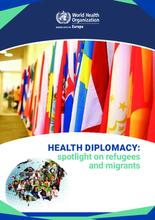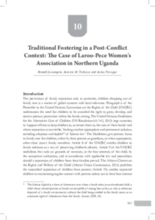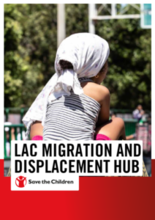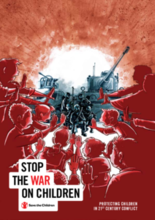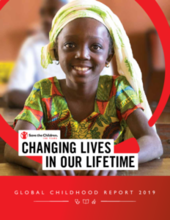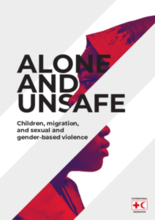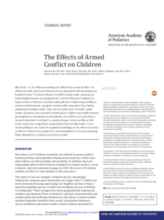Displaying 211 - 220 of 496
This book is part of the WHO Regional Office for Europe’s commitment to work for the health of refugees and migrants. It showcases good practices by which governments, non-state actors and international and nongovernmental organizations attempt to address the complexity of migration, by strengthening health system responsiveness to refugee and migrant health matters, and by coordinating and developing foreign policy solutions to improve health at the global, regional, country and local levels.
Through this photobook, the PCIC (Protecting Children in Conflict) team highlights the milestones achieved for children in situations of conflict through the efforts of the programme, continue to inspire and provide the basis for the next steps towards the realisation of children’s rights.
This chapter from Social Work Practice in Africa: Indigenous and Innovative Approaches presents a traditional fostering model adopted by a group of women in Northern Uganda, analysing its potential for building resilience and for contributing to social capital and social development within the broad context of post-conflict situations.
This brief provides an overview of the Latin America and the Caribbean (LAC) and Migration Hub, established by Save the Children in Panama to support migration work in the region.
This report from Save the Children provides an overview of the impacts of armed conflict on children, the efforts that Save the Children and others are making to address the needs of children affected by armed conflict, and a series of recommendations for governments and others.
In commemoration of its founding 100 years ago, Save the Children is releasing its third annual Global Childhood Report to celebrate progress for children.
This study seeks to improve understanding of the risks and types of sexual and gender-based violence faced by children who migrate on their own, as well as the unfortunate and widespread gaps in protection and assistance for these children.
As part of the "Children Come First: Intervention at the border" project, Save the Children Italy elaborates and disseminates, on a quarterly basis, a dossier containing quantitative and qualitative information (profiles) relating to migrant minors entering Italy. This dossier contains information relating to the period July-October 2018.
In this Technical Report, the authors review the available knowledge on the effects of armed conflict on children and support the recommendations in the accompanying Policy Statement on children and armed conflict.
This study sought to answer the question: How do the experiences of separation and reunification shape the well‐being of immigrant children?

